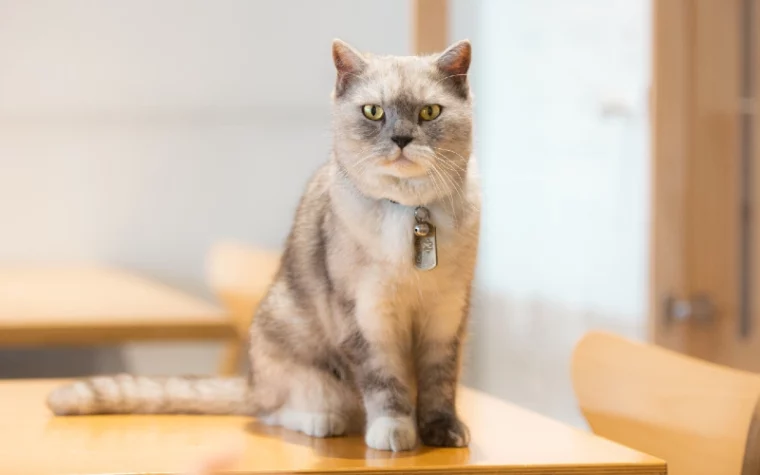
If you’re in the market for a kitty that is affectionate and loyal, the British Shorthair would make an excellent pet. These gorgeous medium to large cats originated in the United Kingdom and are known for their playful personalities and their luxurious coats. When thinking of these kitties, you may instantly think of the classic blue coat color that is commonly found on British Shorthairs. But surprisingly, there are 12 British Shorthair colors, and even more bonus color categories, these kitties can exhibit. Let’s take a look at British Shorthair colors below so you can determine which color your kitty is styling.
The 12 British Shorthair Colors
1. Blue

If you’re looking for a color that embodies the essence of the British Shorthair, the classic blue is it. This color is the most common one found in this breed, it is also the oldest. Blue British Shorthairs will have a light to medium blue-gray coat. The coat will be dense without any spots, stripes, or other types of patterns. White is also not acceptable in this color. The coat is monochrome, or one solid color, while the undercoat is commonly lighter. Even the muzzles and paw pads of these cats are “blue.” Blue British Shorthairs have beautiful rich amber or coppery orange eyes.
2. Lilac
This gorgeous shade of British Shorthair is quite common. To create this color you’ll find a combination of pink, blue, and gray colors on the coat. These colors appear in different variations giving the appearance of a cold lavender to a warm pinkish gray. The undercoat will be lighter while the paw pads and muzzle will mingle well with the corresponding colors. You’ll find cats of this shade will have amber or orange copper eyes, like the blue.
3. Chocolate
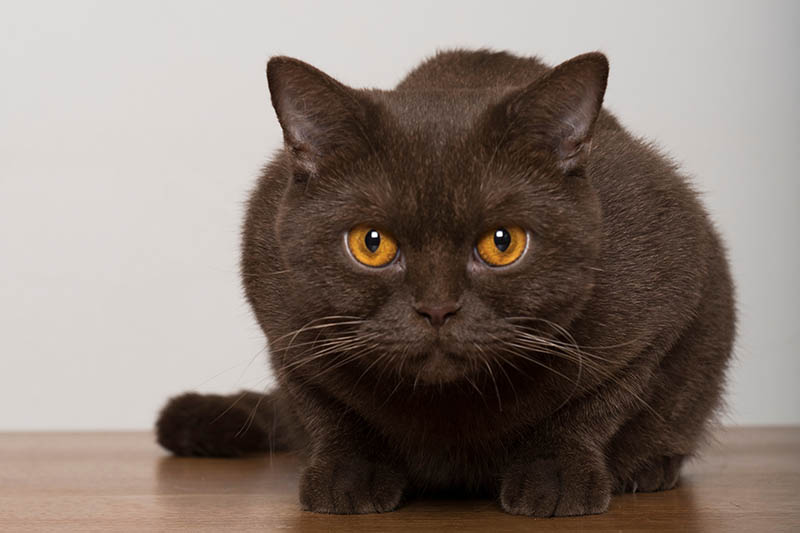
Also known as Havana or chestnut, the chocolate British Shorthair was created from cross-breeding with the chocolate Persian. These cats have a deep, rich chocolate coloration. While darker ones are preferred, all chocolate variations are accepted, even light or milk chocolate. Other hair colors, especially white, are not allowed. The toe pads and noses of these cats can either be chocolate or light pink. You’ll also find that the eyes are copper or dark orange. The more saturation in the eyes, the more valued they are. It can take up to a year and a half for the full formation of this coat color to take place.
4. Black
The black British Shorthair is a rare find. This is because the coat will have a jet-black appearance with no brown or rust patches, which is difficult to breed. The undercoat, paw pads, and nose of these cats are saturated black. Many black British shorthairs have orange eyes but they can also have copper or gold colors as well.
5. White

The white British shorthair is striking to behold. There are no undertones found on these cats nor patches and stripes of other colors. The nose and toe pads of a white British Shorthair should be pink without any other colors present. Often, this color presents striking blue eyes. However, yellow or orange eyes are also common.
6. Cream
This coloration on the British Shorthair will remind you of off-white. This color is created when light red coats are mixed with the white gene. This gorgeous color is accompanied by pink paw pads and noses. The eyes are the same as those most common for British Shorthairs – copper, gold, or orange.
7. Red (Ginger)
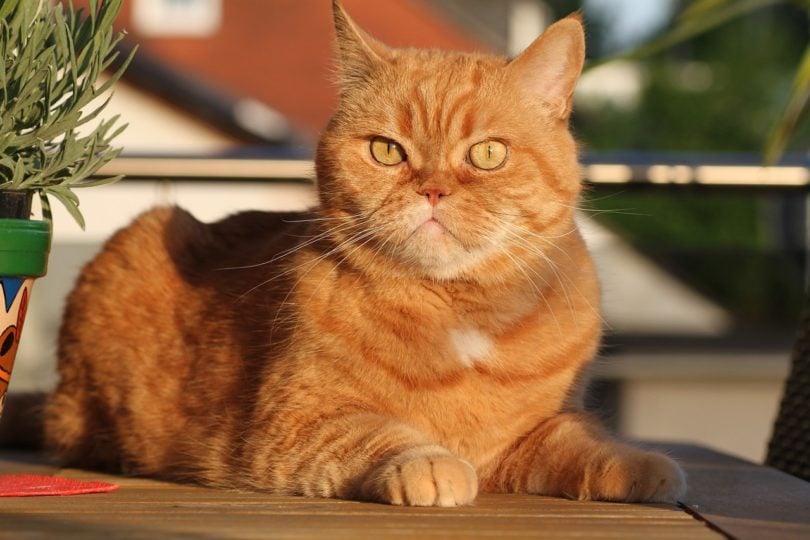
The red British Shorthair and its tabby markings are often referred to as a Garfield. The red coloration is inherited from Persian or other exotic cats in the breed’s history. The coat is not solid red, instead, there is an uneven distribution of color. You’ll find tabby markings, usually on the paws and forehead. You’ll find reddish brick tones on the paw pads and noses of these kitties while the eyes are copper or a rich orange.
8. Cinnamon
One of the most valued British Shorthair colors is cinnamon. This coloration is very rare and similar to that of chocolate. However, you’ll find a copper or reddish undertone that gives these kitties their uniqueness. The toe pads and noses of these cats will be cinnamon or pink while their eyes are orange or bright amber.
9. Fawn
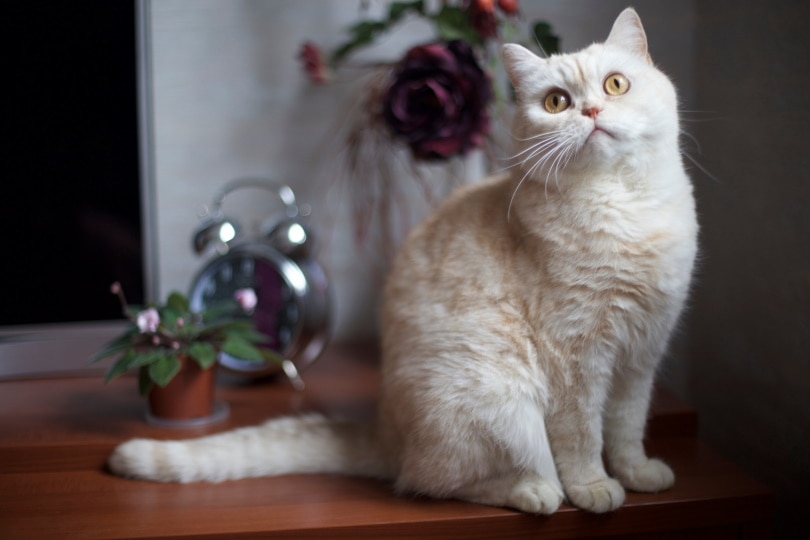
When speaking of rare British Shorthair colors, you’ll find that the fawn is considered the rarest and most valuable. These kitties will have a mushroom-colored coat that is soft and features a rosy hue. The toe pads and noses will be a pinkish-fawn color. Unfortunately, the only way to prove a British Shorthair is for sure fawn in color is to have a DNA test done. It takes both parents having the gene to create a fawn kitten.
10. Tabby
Tabby is more of a pattern than a color, but you’ll know the tabby British Shorthair by the “M” marking on its forehead. As for the coat, it will be dense in color with clear markings that are not brindle. The main colors are usually black and gray. You’ll find no white markings or hair on these cats. The paws and tails of these kitties will have ringed markings while the ears will share the same color patterns as the coat.
Here are the three categories of tabby British Shorthairs can fall into:
11. Tortoiseshell (Tortie)
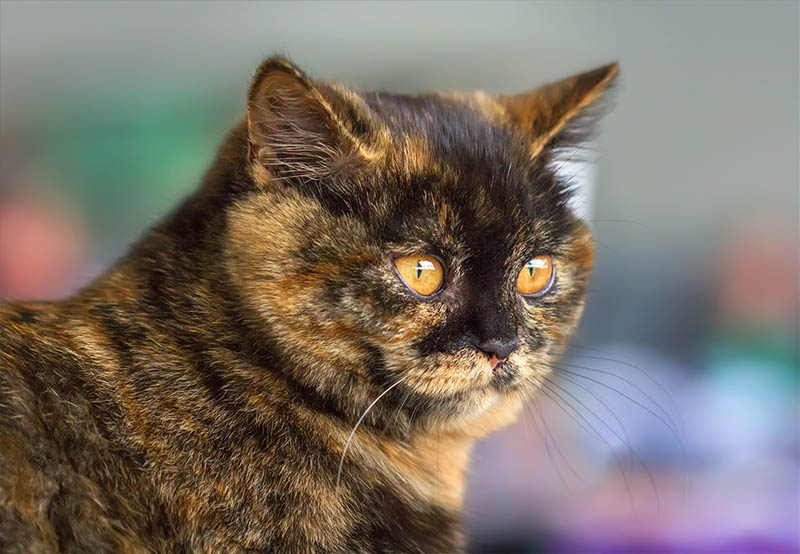
Another pattern rather than a specific color, the mosaic pattern of the tortie British Shorthair is created from various tabby patterns and spots of solid colors on the coat. When born, tortie kittens may only have a few spots as this coloration takes time to develop fully. Torties can produce kittens of different color patterns which earns them the distinction of being kings and queens.
These patterns include:
12. Solid (Monochrome)
A monochrome or solid British Shorthair has an even distribution of color throughout its coat without any white hairs, patterns, stripes, or spots. Blue and lilac are the most common monochrome colors. Cream, chocolate, and black aren’t common while the rarest are fawn, cinnamon, and red.
Conclusion
As you can see, there are several colors and patterns a British Shorthair cat can exhibit. While some of these colors are common to see, there are a few that are rare. Fawn, a beautiful color when exhibited by a British Shorthair is the rarest and most valuable coloration these cats may exhibit. If you’re lucky enough to own a British Shorthair, the list above will help you determine its exact coloring and your kitty’s rarity.
Featured Image Credit: Songhan Wu, Pexels





